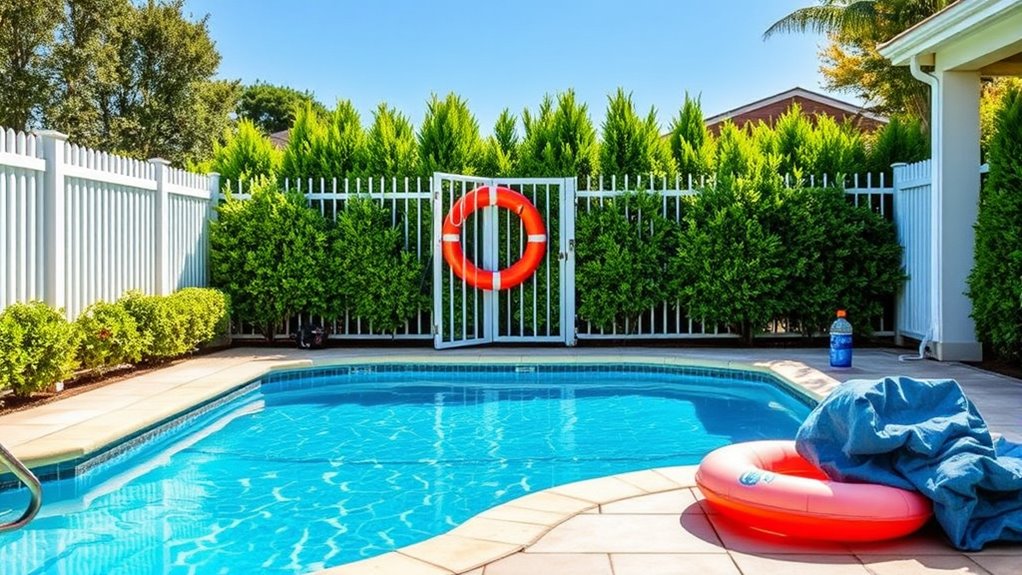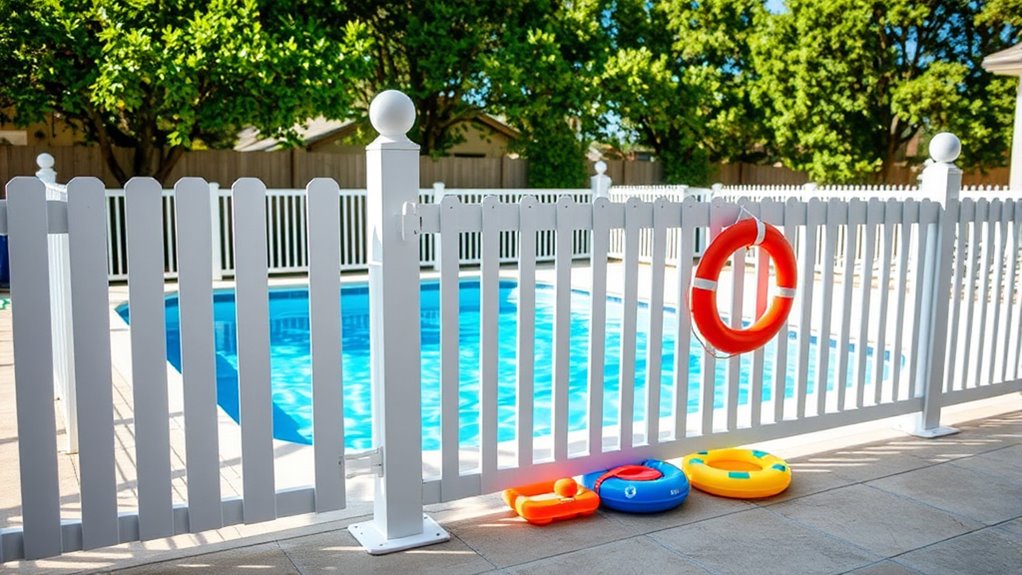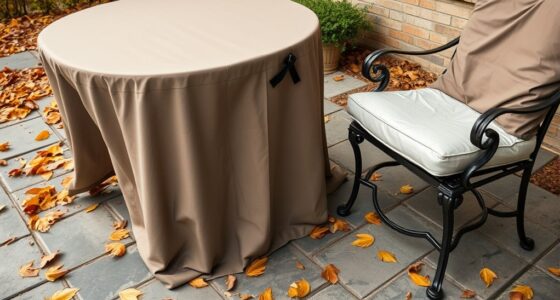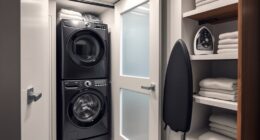To keep everyone safe, always supervise children closely when near the pool, avoiding distractions like phones. Install a secure four-sided fence with a self-latching gate and use alarms or covers as extra layers of protection. Teach kids and guests pool rules, and make certain everyone knows CPR. Regularly check safety devices and maintain clear, well-lit water for easy supervision. Following these essential steps will help prevent accidents—keep going to learn even more safety tips.
Key Takeaways
- Install a four-sided fence with a self-latching gate to prevent unsupervised access to the pool.
- Always supervise children closely; designate a dedicated water watcher when the pool is in use.
- Enroll children in swimming lessons and teach safety rules for pool use.
- Use safety devices like pool covers, alarms, and compliant drain covers for added protection.
- Keep the pool area well-lit, clear, and maintain constant vigilance to prevent distractions and accidents.

Having a pool can be fun and invigorating, but it also comes with serious safety responsibilities. As a homeowner, it’s essential to understand that drowning risks are real, especially in private pools where most incidents occur. From the 1990s to 2000s, drowning rates in private pools ranged from 0.88 to 1.72 per 100,000, but those numbers have decreased over time, reaching about 0.18 per 100,000 in 2013. Still, the danger remains, and most drownings—around 72%—happen in private settings. Children under 10 are the most vulnerable, making up over 42% of cases, with the highest risk among those under 5. Even brief moments of distraction can lead to tragedy, as many drownings happen when children are unsupervised for less than 30 seconds.
Every year, around 358 children die from drowning, with thousands more suffering nonfatal injuries. The majority of these fatalities—about 81%—occur in residential pools. African American children are disproportionately affected, with drowning death rates considerably higher than their population share, highlighting the importance of targeted safety measures. The risk extends beyond children; adults over 40 also experience a notable number of drownings, emphasizing that vigilance is necessary for everyone around water. Research shows that poor swimming skills significantly increase drowning risk, and swimming lessons are proven to reduce this risk.
Constant supervision is essential. When children are near the pool, avoid distractions like phones or books. Designate a responsible adult as a water watcher during pool use—someone who remains attentive and never leaves children unattended. Remember, even a few seconds of inattention can be deadly. Establish clear rules about no unsupervised pool access and ensure all family members and guests understand these safety protocols.
Physical barriers are your first line of defense. Installing a four-sided fencing system with a self-closing, self-latching gate out of children’s reach can drastically reduce drowning risk. Pool covers and alarms add extra layers of protection, alerting you to any unauthorized or accidental access. Regularly inspect and maintain these barriers and safety devices to confirm they’re functioning properly. Using compliant drain covers prevents dangerous suction entrapments, which can be fatal. [Proper pool equipment and safety devices are vital, as circulation entrapment cases have shown that children are particularly vulnerable to such incidents.]
Education plays an important role in prevention. Enroll children in swimming lessons to boost their water skills and confidence. Teach them pool rules and the importance of staying within designated areas. CPR training for adults and older children can make a difference during emergencies. Developing a family emergency plan and practicing quick response drills ensure everyone knows what to do if an incident occurs. Good visibility inside the pool—well-lit, clear water free of debris—also helps you see a submerged person quickly.
Frequently Asked Questions
How Often Should Pool Safety Equipment Be Inspected?
You should inspect your pool safety equipment at least once a month to catch any damage or malfunctions early. For pools with heavy use or older equipment, consider more frequent checks, like biweekly or weekly. Be sure to test alarms and gates during each inspection and look for wear on fences, covers, and ladders. Regular inspections help keep your pool safe, compliant, and in good working order.
Are Pool Alarms Effective for Preventing Accidents?
Imagine a child accidentally falls into your pool, triggering a well-calibrated underwater alarm. In this case, the alarm detects the disturbance promptly, giving you vital seconds to respond. While pool alarms greatly enhance safety, they aren’t foolproof alone. They work best when combined with other measures like fencing and supervision. Regular testing and maintenance are indispensable to guarantee they function reliably, providing early warnings that can prevent tragedies.
What Are the Best Child-Proof Pool Covers?
When selecting the top child-proof pool covers, you should consider automatic safety covers for their convenience and strong barrier protection. They’re easy to operate with electric controls, durable, and prevent children from accessing the pool. Solid vinyl covers offer maximum security by fully blocking light and debris, while mesh covers provide a lighter alternative that still keeps kids safe. Prioritize quality, secure anchoring, and custom sizing to guarantee ideal safety.
How to Train Family Members on Pool Safety?
You might worry that training everyone on pool safety takes too much time, but it’s essential. Start with a clear safety orientation for family members and guests, emphasizing rules and emergency procedures. Model safe behavior consistently, enforce rules, and provide ongoing reminders. Make certain all members learn to swim, wear appropriate gear, and understand hazards like drains. Regular practice and open communication help build a safety-conscious environment around your pool.
When Should I Consider Professional Pool Safety Assessments?
You should consider professional pool safety assessments whenever you acquire a new or used home with a pool, especially if laws or codes change. Also, schedule one after weather events, signs of deterioration, or safety concerns like accidents or near-misses. Regular inspections before hosting gatherings, during renovations, or when upgrading equipment help guarantee your pool remains safe, compliant, and well-maintained, reducing risks and protecting your family.
Conclusion
Think of your pool as a delicate garden that needs careful tending. With vigilant supervision and safety measures, you’re nurturing a space where joy blossoms without fear. By staying alert and prepared, you become the guardian of this oasis, ensuring it remains a haven for laughter and memories. Remember, your watchful eye and proactive steps are the shield that keeps your loved ones safe, turning your backyard into a protected paradise for everyone to enjoy.









